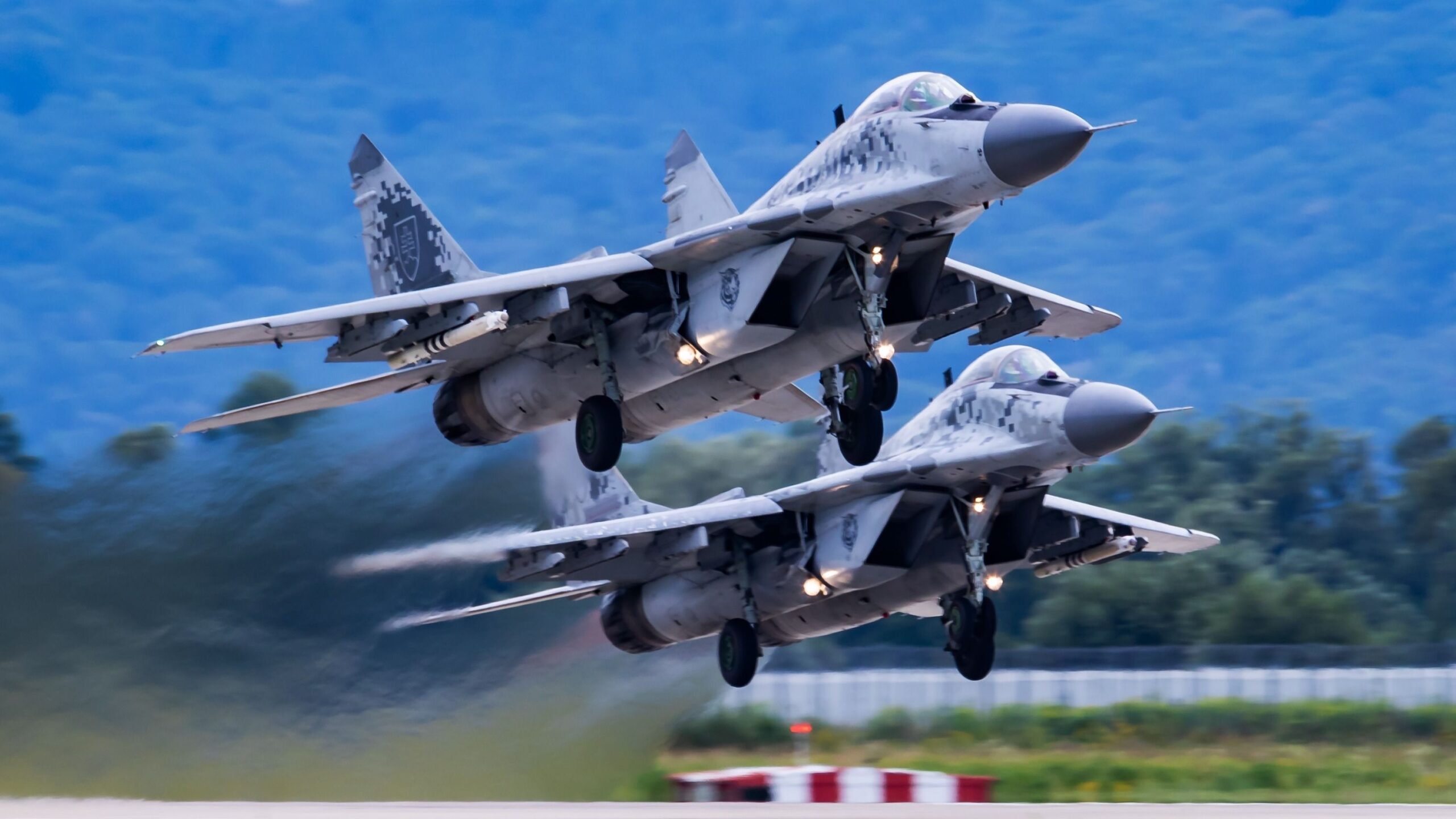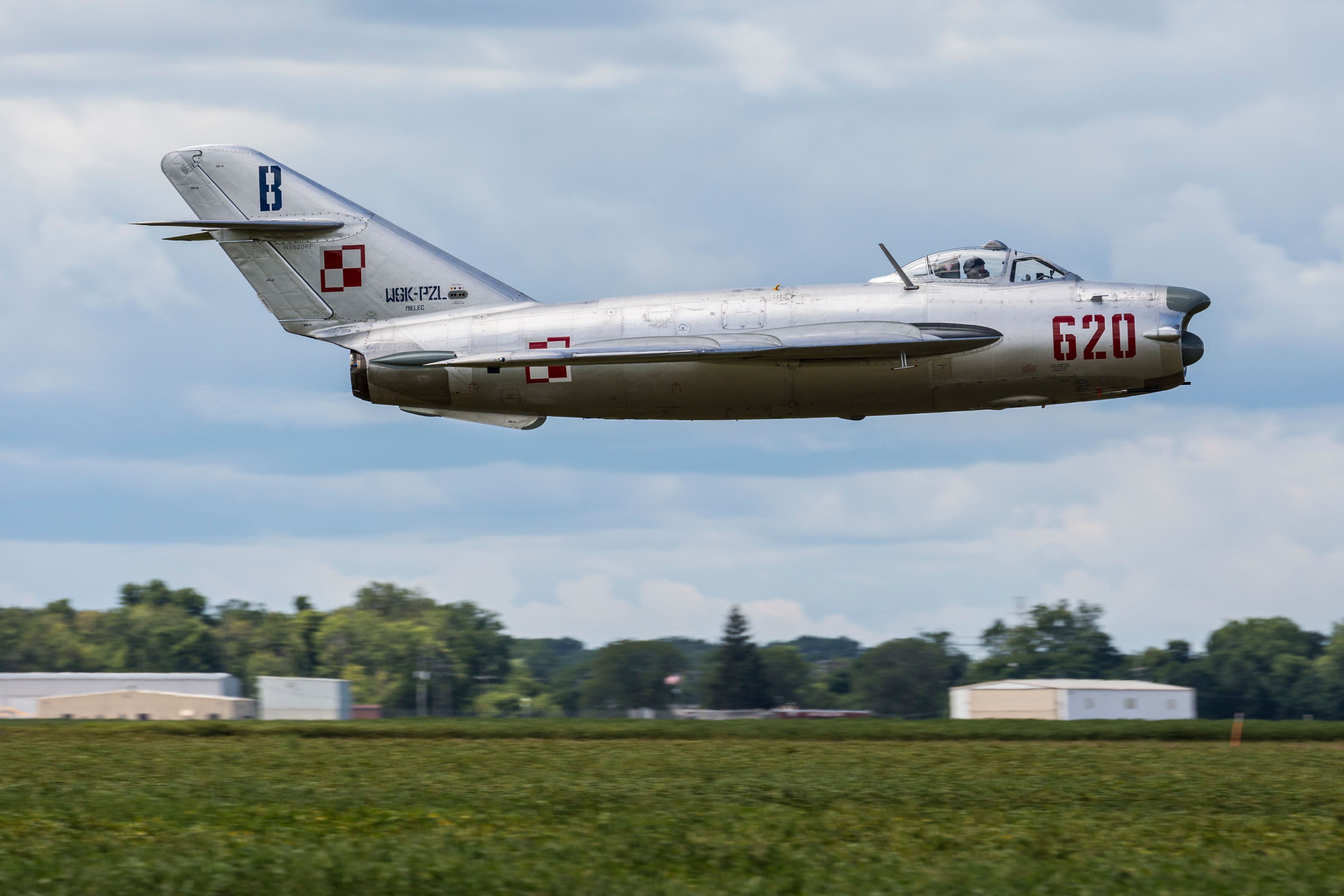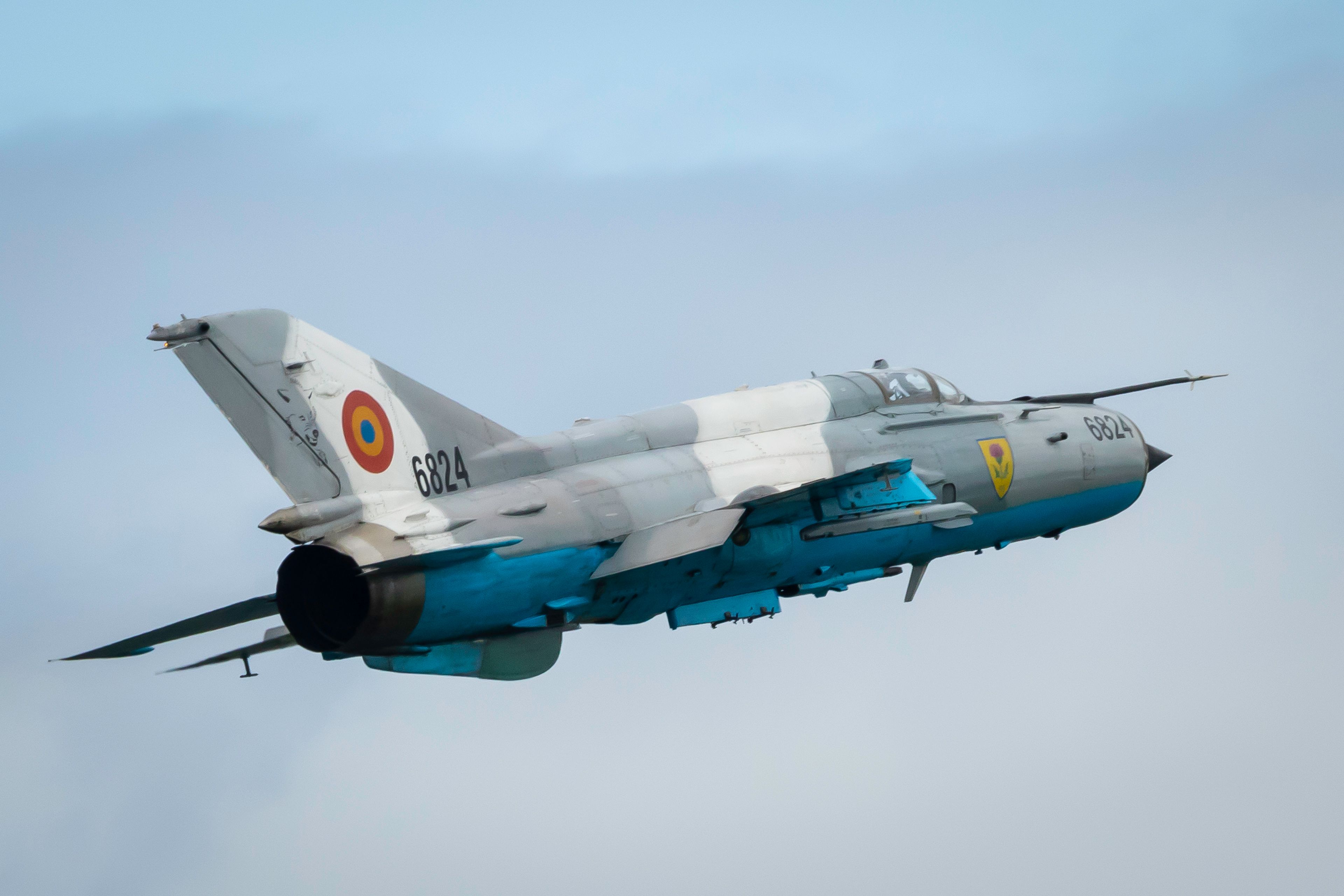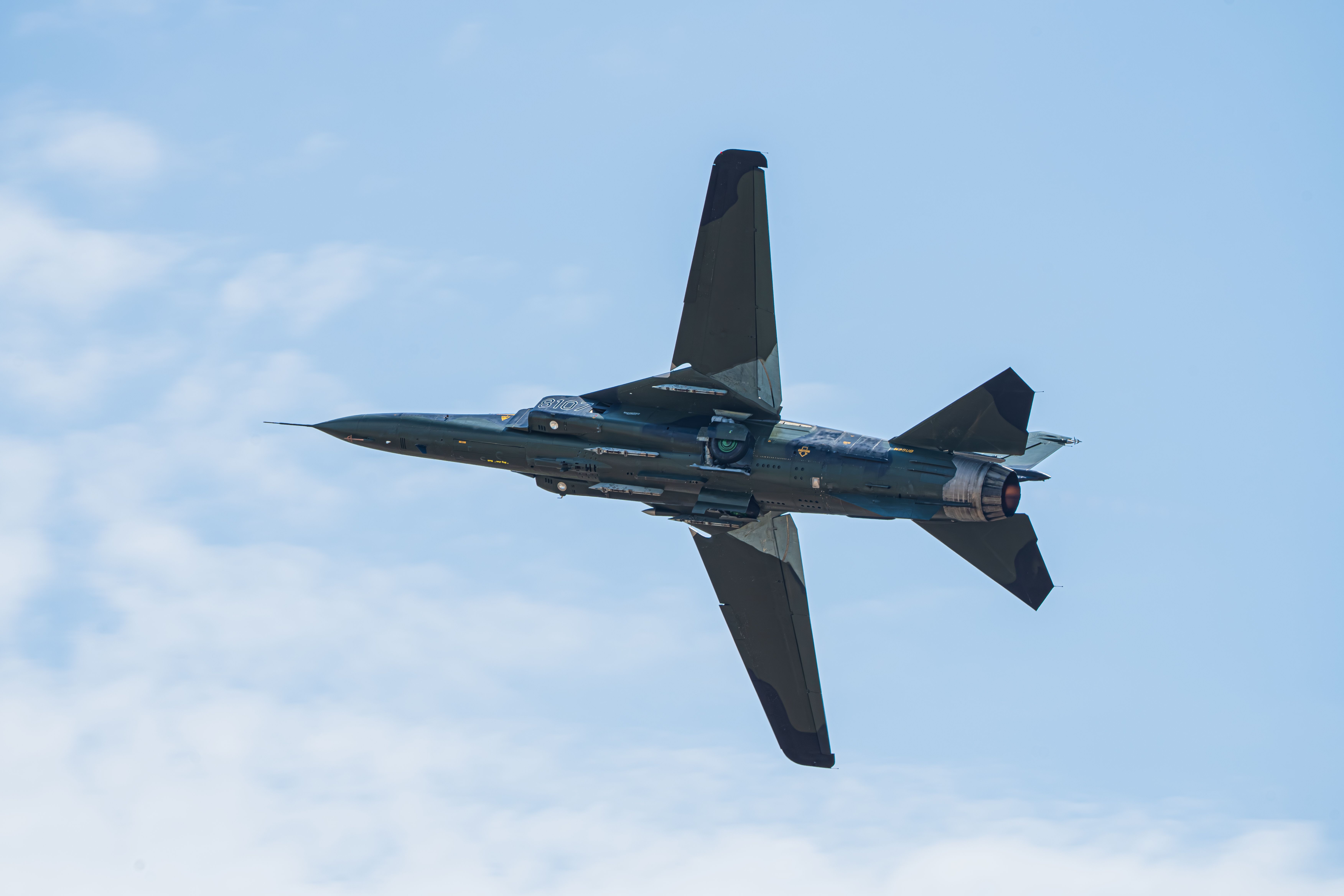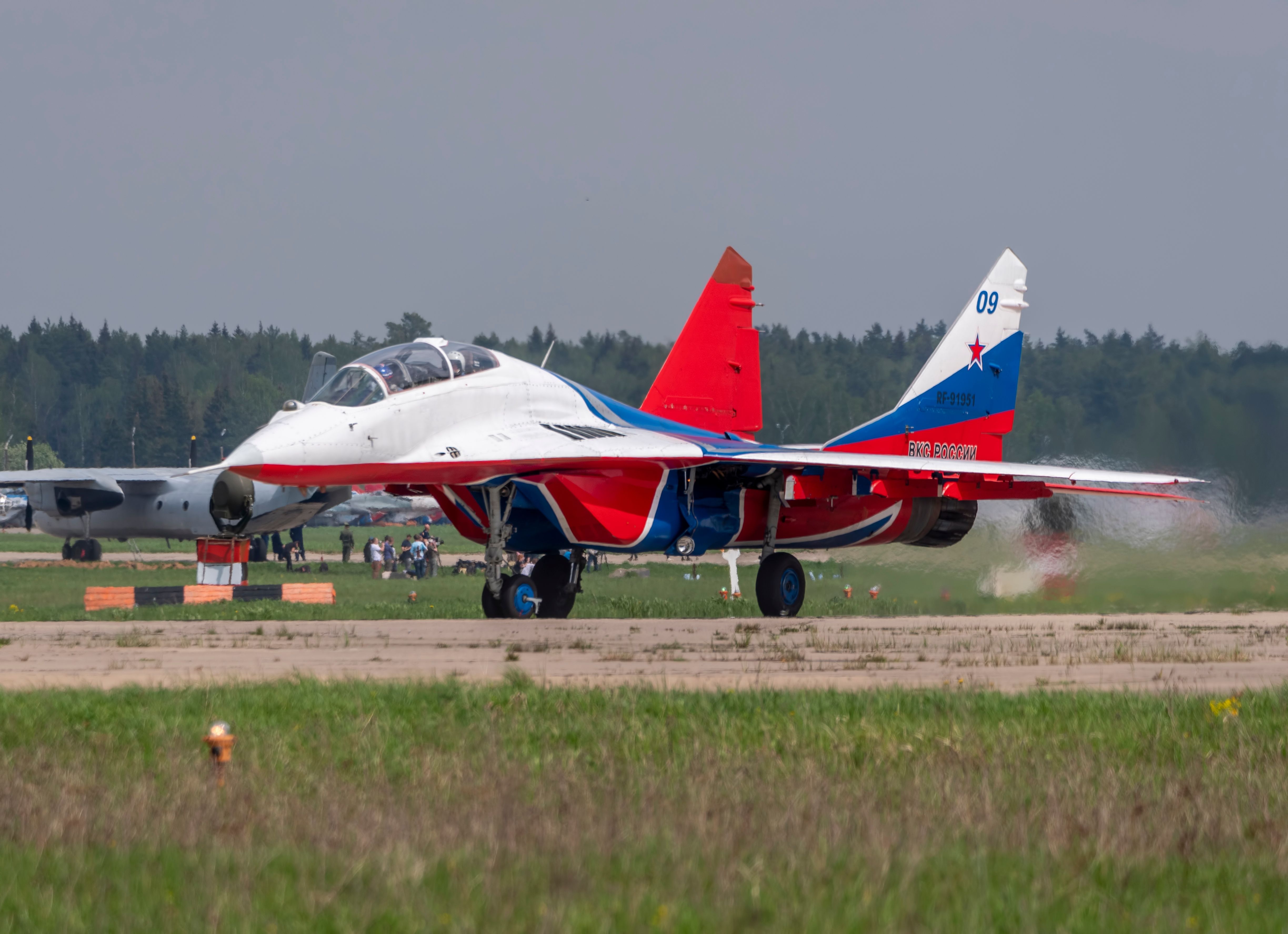Russan Aircraft Corporation “MiG” is an influential name in the world of fighter jets. Across a history marked by innovation and advancement, MiG has produced several iconic models, each contributing to the evolution of aerial combat technology. These are some of the main MiG fighter jet models, showcasing their unique specifications, strengths, and historical significance:
MiG-15 (first flight: December 1947)
An iconic aircraft developed in the late 1940s, the MiG-15 marked a significant leap in jet fighter design. Introduced during the Korean War, it proved to be a game-changer, altering the course of aerial combat. As one of the first successful jet fighters to incorporate swept wings to achieve high transonic speeds, the MiG-15 brought enhanced performance and agility, surprising the Western powers.
Photo: BlueBarronPhoto | Shutterstock
Its Mach 0.9 speed, coupled with the ability to swiftly climb (at 10,080 ft/min) and engage in dogfights, outclassed many contemporary fighters. Armed with one 37mm and two 23mm cannons, it demonstrated superiority in combat scenarios, leading to its prominence in both the Soviet and other global air forces.
Beyond its technical prowess, the MiG-15 carries significant historical weight. Its introduction influenced Cold War geopolitics and air warfare strategies. The aircraft’s reliability, ease of operation, and the economic advantage of its mass production (nearly 20,000 units were built) made it a symbol of Soviet engineering prowess.
Even though it was eventually surpassed by newer jet designs, the MiG-15’s impact on aviation history remains profound, recognized as a revolutionary step in the evolution of jet-powered aerial warfare.
MiG-21 (first flight: June 1955)
Renowned for its sleek design, speed, and maneuverability, the supersonic MiG-21 became one of the most produced and widely exported fighter aircraft globally. Its delta-wing configuration and innovative aerodynamics facilitated exceptional performance, earning it the moniker “balalaika” due to its distinctive shape, resembling the stringed instrument of the same name.
Photo: AMMHPhotography | Shutterstock
The MiG-21’s ability to reach Mach 2 speeds and its adeptness in both air-to-air and air-to-ground combat engagements established it as a versatile and effective aircraft, having served across 60 countries.
This revolutionary aircraft is one of the most-produced combat aircraft since the Korean War. Its simplicity, reliability, and adaptability makes it a favorite among pilots. The largest operator of MiG-21s is India, having introduced more than 1,200 MiG fighters since 1963.
MiG-23 (first flight: June 1967)
The MiG-23 represented a significant leap in Soviet aviation technology, introducing variable-sweep wings and groundbreaking advancements in design. This fighter aircraft was designed for multi-role capabilities, equipped to engage in both air-to-air and air-to-ground combat.
Photo: Lukas Souza | Simple Flying
The ability to alter its wing sweep in-flight, transitioning between low-speed agility and high-speed performance, makes the MiG-23 a versatile platform. Its maximum speed of around Mach 2.35 and an array of weaponry, including a 23mm cannon, missiles, and bombs, provides a potent combination for various combat scenarios.
Between 1967 and 1985, over 5,000 units of this third-generation jet fighter were built, making it the most-produced variable-sweep wing aircraft in history – and the introduction of its unique geometry significantly influenced subsequent fighter jet designs.
MiG-29 (first flight: October 1977)
Developed in the early 1970s, the MiG-29 heralded a new era in Soviet aviation, representing a formidable fourth-generation fighter jet. This twin-engine fighter aircraft was designed with a focus on maneuverability, speed, and overall combat effectiveness.
Photo: aarrows | Shutterstock
The MiG-29 features a maximum speed of around Mach 2.25 and is equipped with advanced avionics. It also boasts an impressive array of weaponry, including a 30mm cannon and a mix of air-to-air missiles and air-to-ground munitions. Its agility and aerodynamic design enables exceptional maneuvering capabilities, making it a potent adversary in dogfights and aerial combat scenarios.
Launched as a counter to contemporary US fighter jets, like the McDonnell Douglas F-15 Eagle, the MiG-29 showcased the Soviet Union’s dedication to developing a cutting-edge fighter aircraft. With its capabilities tailored for both air superiority and ground attack, the MiG-29 swiftly became a symbol of advanced Soviet military technology.
Over the years, multiple upgraded variants have kept the MiG-29 relevant in the international fighter aircraft market, making it an integral part of numerous air forces – particularly, the Russian Aerospace Forces, Indian Air Force, and Uzbekistan Air and Air Defence Forces – and a significant chapter in the history of modern fighter jets.
MiG-35 (first flight: December 2016)
The MiG-35 represents the latest evolution in the MiG series of fighter jets. It integrates cutting-edge avionics, advanced radar systems, and enhanced weapon capabilities, positioning it as a versatile and modern multi-role fighter.
With an estimated maximum speed of around Mach 2.25, the MiG-35 combines high-speed performance with improved range and endurance. Its diverse armament includes a 30mm cannon, air-to-air missiles, precision-guided munitions, and anti-ship missiles, showcasing its adaptability in various mission profiles.
Marketed as a 4++ generation jet fighter, the MiG-35 excels in air superiority, ground attack, and reconnaissance missions, and incorporates stealth features to reduce its radar cross-section. This addition enhances operational effectiveness in modern, contested environments.
As a contender in the global market for advanced fighter aircraft, the MiG-35 stands as a testament to Mikoyan’s commitment to pushing the boundaries of technology, ensuring the legacy of the MiG series remains relevant in the 21st century.
What do you think of this story? Let us know in the comments!

